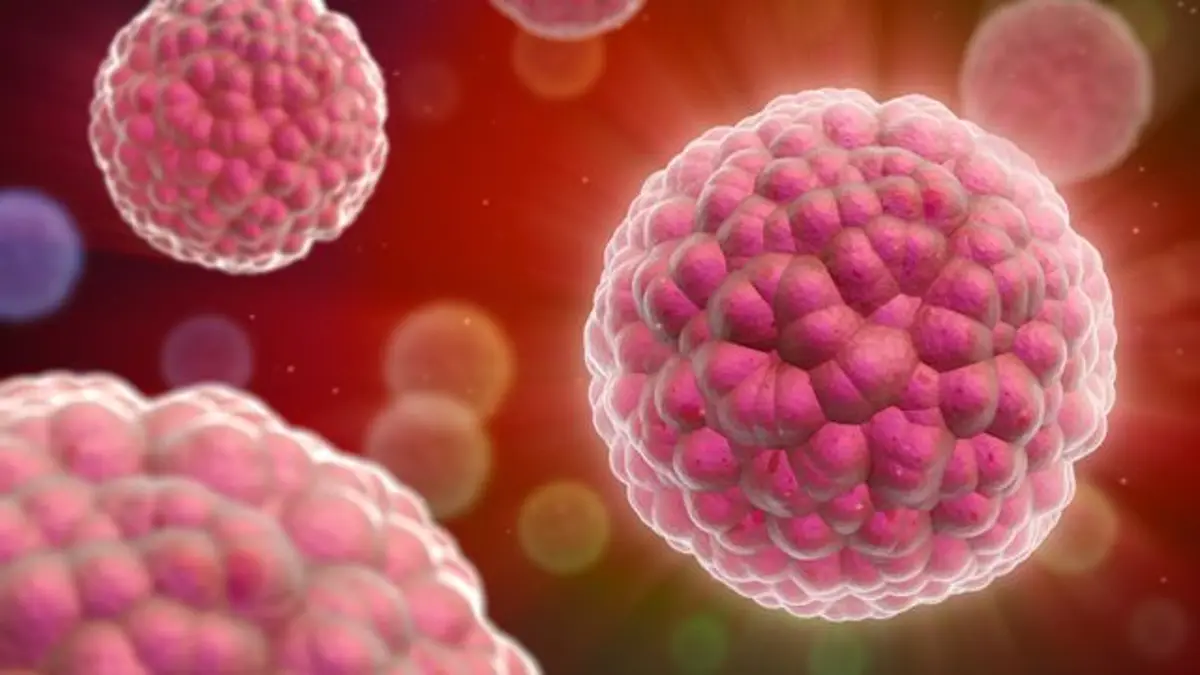Cancer
Overview
Cancer is a group of diseases characterized by the uncontrolled growth and spread of abnormal cells. If not treated, it can lead to death. Cancer can affect almost any part of the body and often forms a mass called a tumor, although some cancers, like leukemia, do not. According to the World Health Organization (WHO), cancer is a leading cause of death globally, responsible for nearly 10 million deaths in 2020, which is approximately one in six deaths worldwide.

The burden of cancer is expected to rise significantly in the coming decades due to aging populations, changes in lifestyle, and increased exposure to risk factors.
Key facts
Cancer is one of the leading causes of death globally, with significant socio-economic impacts.
The most common types of cancer globally include breast, lung, colorectal, prostate, and stomach cancer.
Tobacco use is the single largest preventable cause of cancer worldwide, accounting for over 20% of cancer deaths and about 70% of lung cancer cases.
Approximately 30-50% of cancers can be prevented by reducing exposure to risk factors and implementing evidence-based prevention strategies.
Early detection through screening programs and timely treatment significantly improve survival rates.
Low- and middle-income countries bear a disproportionate burden of cancer due to limited access to healthcare services, diagnostics, and treatment.
Types of Cancer
Cancer is classified based on the type of cell it originates from. The main types include:
Carcinomas: Cancer that begins in the skin or tissues lining internal organs. Examples include breast, lung, and colorectal cancers.
Sarcomas: Cancer that originates in connective or supportive tissues like bone, cartilage, or muscle.
Leukemia: Cancer of the blood and bone marrow that does not form solid tumors. It disrupts normal blood cell production, leading to symptoms like fatigue and increased infections.
Lymphomas and Myelomas: Cancers that begin in the cells of the immune system. Lymphomas affect lymph nodes, while myelomas target plasma cells in the bone marrow.
Central Nervous System Cancers: Includes cancers of the brain and spinal cord, which can lead to neurological symptoms.
Causes of Cancer
Cancer arises from genetic changes that disrupt normal cell growth. These changes may result from a combination of external (environmental) and internal (genetic) factors.
Lifestyle Factors:
Tobacco Use: Leading preventable cause of cancer, associated with lung, oral, bladder, and several other cancers.
Unhealthy Diet: Diets high in processed foods, red meat, and low in fruits and vegetables increase cancer risk.
Obesity and Physical Inactivity: Excess body fat is linked to several cancers, including breast, colorectal, and endometrial cancers.
Excessive Alcohol Consumption: Chronic alcohol use is associated with liver, mouth, throat, and esophageal cancers.
Environmental and Occupational Exposures:
Exposure to Carcinogens: Substances like asbestos, benzene, and ultraviolet (UV) radiation increase cancer risk.
Air Pollution: Associated with lung cancer and other respiratory diseases.
Infections:
Viruses: Human Papillomavirus (HPV) causes cervical and other cancers; Hepatitis B and C are linked to liver cancer.
Bacteria: Helicobacter pylori infection increases stomach cancer risk.
Genetics:
Inherited Mutations: Genetic predisposition plays a role in certain cancers, such as BRCA1 and BRCA2 mutations in breast and ovarian cancers.
Age:
Cancer risk increases with age due to accumulated genetic mutations and reduced immune function.
Diagnosis of Cancer
Early and accurate diagnosis is crucial for effective treatment. Common diagnostic methods include:
Imaging Tests: X-rays, CT scans, MRIs, and PET scans to detect tumors and evaluate their spread.
Biopsy: Sampling of tissue for microscopic examination to confirm the presence of cancer cells.
Blood Tests: Includes tumor markers like PSA for prostate cancer or CA-125 for ovarian cancer.
Genetic Tests: Identify inherited mutations that increase cancer risk.
Screening Programs: Early detection measures like mammograms for breast cancer, colonoscopies for colorectal cancer, and Pap smears for cervical cancer.
Symptoms of Cancer
The symptoms of cancer can vary depending on the type and location of the disease. However, some common warning signs and symptoms, as highlighted by WHO, include:
Unexplained Weight Loss: Significant and unintentional weight loss over a short period.
Persistent Fatigue: Chronic tiredness that does not improve with rest.
Pain: Persistent pain, such as headaches or back pain, without a clear cause.
Skin Changes: Changes in skin color, unusual growths, or sores that do not heal.
Changes in Bowel or Bladder Habits: Persistent diarrhea, constipation, or changes in stool consistency.
Unusual Bleeding or Discharge: Blood in the stool, urine, or from other parts of the body.
Lumps or Thickening: Any lump in the breast, testicles, or other body areas.
Persistent Cough or Hoarseness: Chronic cough or difficulty swallowing.
Unexplained Fever: Persistent fever without infection.
Early recognition of symptoms and prompt medical evaluation are essential for diagnosing and treating cancer effectively.
Treatment of Cancer
Cancer treatment depends on the type, stage, and location of the cancer, as well as the patient’s overall health. Comprehensive care often involves a combination of therapies:
Surgery: Removes the tumor and, in some cases, nearby lymph nodes to prevent spread.
Radiation Therapy: Uses high-energy rays to kill cancer cells or shrink tumors. Often used in combination with other treatments.
Chemotherapy: Employs drugs to destroy rapidly dividing cancer cells, though it may affect healthy cells as well.
Immunotherapy: Boosts the immune system to fight cancer. Examples include checkpoint inhibitors and CAR T-cell therapy.
Targeted Therapy: Focuses on specific genetic changes in cancer cells, minimizing damage to healthy tissues.
Hormone Therapy: Blocks hormones that fuel certain cancers, such as estrogen in breast cancer or testosterone in prostate cancer.
Palliative Care: Addresses symptoms and improves quality of life for patients with advanced cancer.
Emerging treatments like precision medicine and gene therapy hold promise for more personalized and effective cancer care in the future.
WHO’s Stance on Cancer
The World Health Organization (WHO) takes a comprehensive approach to cancer prevention, control, and care. Key initiatives include:
Global Cancer Control: WHO’s Global Strategy emphasizes reducing cancer risk through vaccination programs (e.g., HPV and Hepatitis B), promoting healthy lifestyles, and implementing workplace regulations to limit exposure to carcinogens.
National Cancer Control Programs: Supports countries in developing policies for cancer prevention, early detection, and treatment.
Universal Health Coverage: Advocates for affordable and equitable access to cancer diagnostics and treatments, particularly in low- and middle-income countries.
Public Awareness Campaigns: Educates populations about cancer risk factors, symptoms, and the importance of early detection.
Collaboration with International Agencies: Works with the International Agency for Research on Cancer (IARC) to monitor global cancer trends and provide evidence-based recommendations.
WHO also encourages research into cancer prevention and treatment, aiming to reduce disparities in cancer care globally. Their goal is to lower premature cancer deaths by promoting early diagnosis, access to care, and integrated health services.




